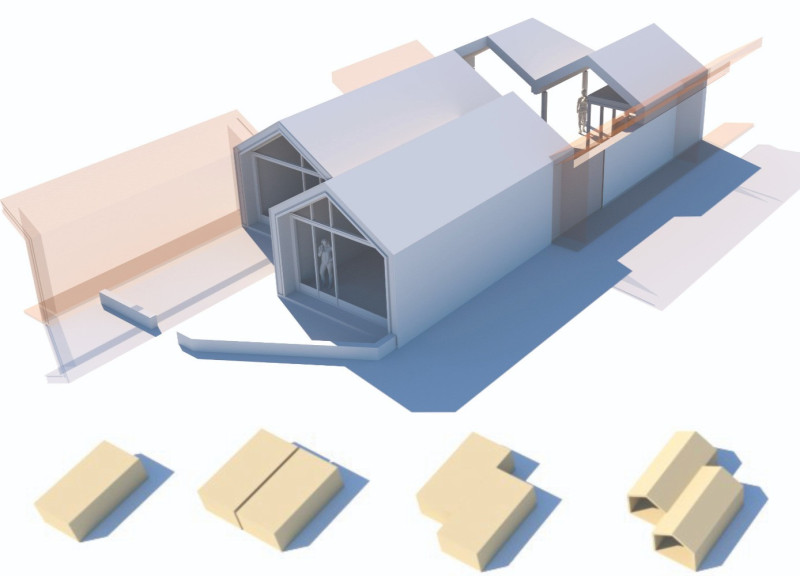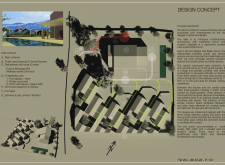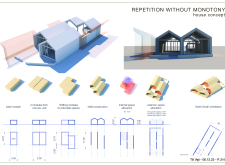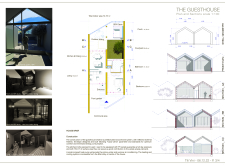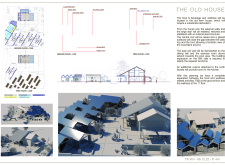5 key facts about this project
Community Interaction Through Design
One of the most notable features of this project is its focus on communal living. Central to the design is a shared public area that includes gardens and a veranda, encouraging social interaction among residents. The layout features a refurbished old house that serves essential functions such as food services and wellness spaces. This historical inclusion offers a connection to the past while enhancing the contemporary use of space. The spacious residential units are arranged to provide private courtyards and outdoor areas, maintaining inhabitants' privacy while simultaneously integrating with communal facilities.
Sustainability is a core component of this architectural project. The structures adhere to Casa Clima standards, focusing on energy efficiency and reduced environmental impact. The use of solar panels and compact heat pumps represents a forward-thinking approach to energy consumption. Additionally, the water conservation strategies, such as rainwater collection systems, further emphasize the commitment to sustainability.
Unique Design Approaches
The architectural design utilizes modular construction techniques, allowing for adaptable living arrangements and promoting diversity in housing options. This modularity plays a crucial role in ensuring that the design remains cohesive without sacrificing individuality. Large, strategically positioned windows and outdoor spaces blur the boundaries between indoor and outdoor environments, enhancing natural light flow and creating direct connections to nature.
The choice of materials including wood, reflective finishes, and glass contributes to the overall energy efficiency and aesthetic of the project. Wood frames for residential units lend warmth and sustainability, while reflective materials help in passive temperature regulation. This combination of modern materials with careful attention to detail supports the project's architectural intentions.
For a deeper understanding of the project's architectural plans, sections, and designs, readers are encouraged to explore the detailed presentations available. Insights into the interplay of space, materiality, and sustainability within this agricultural setting can provide a richer comprehension of the architectural ideas at play in this noteworthy project.


